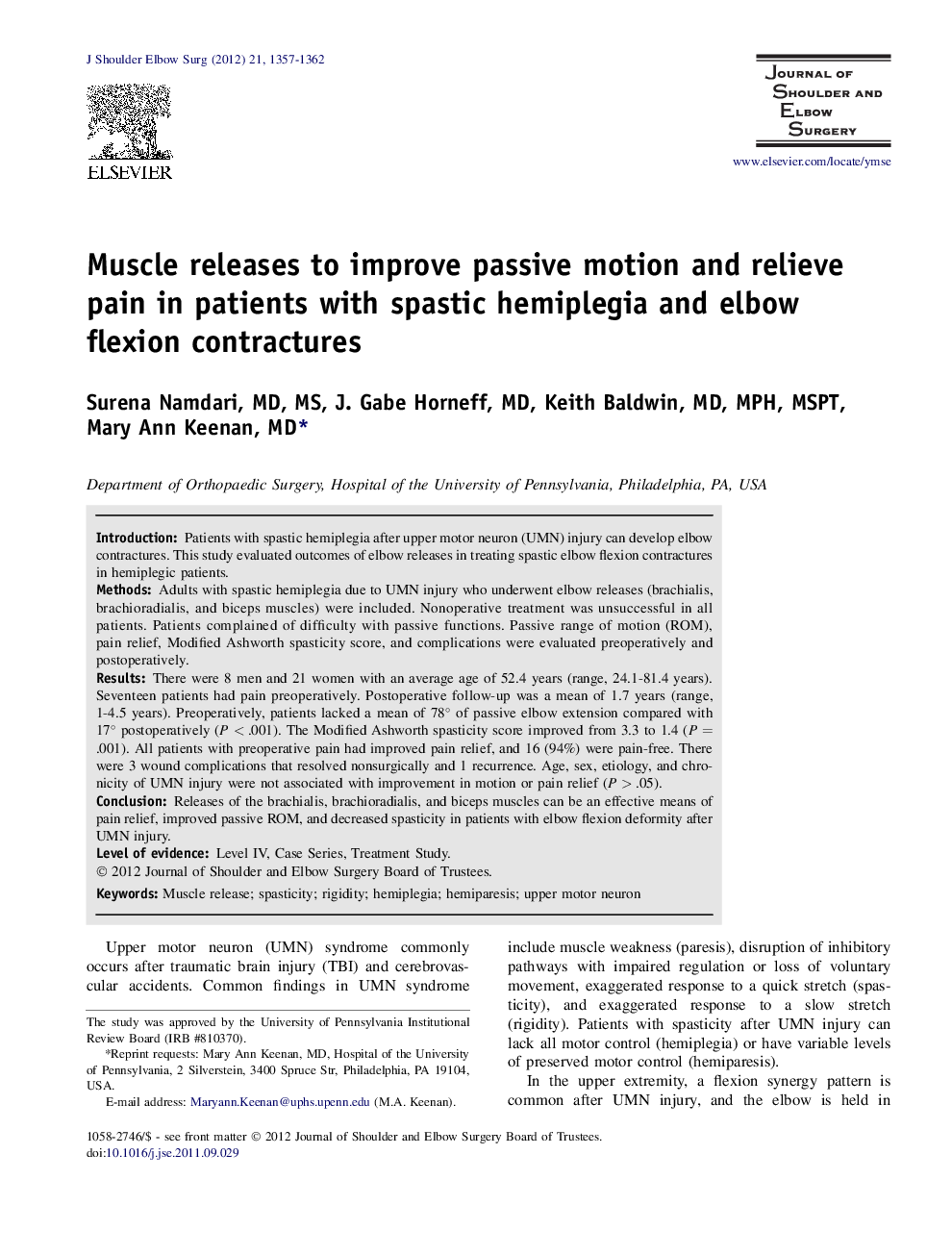| Article ID | Journal | Published Year | Pages | File Type |
|---|---|---|---|---|
| 4074182 | Journal of Shoulder and Elbow Surgery | 2012 | 6 Pages |
IntroductionPatients with spastic hemiplegia after upper motor neuron (UMN) injury can develop elbow contractures. This study evaluated outcomes of elbow releases in treating spastic elbow flexion contractures in hemiplegic patients.MethodsAdults with spastic hemiplegia due to UMN injury who underwent elbow releases (brachialis, brachioradialis, and biceps muscles) were included. Nonoperative treatment was unsuccessful in all patients. Patients complained of difficulty with passive functions. Passive range of motion (ROM), pain relief, Modified Ashworth spasticity score, and complications were evaluated preoperatively and postoperatively.ResultsThere were 8 men and 21 women with an average age of 52.4 years (range, 24.1-81.4 years). Seventeen patients had pain preoperatively. Postoperative follow-up was a mean of 1.7 years (range, 1-4.5 years). Preoperatively, patients lacked a mean of 78° of passive elbow extension compared with 17° postoperatively (P < .001). The Modified Ashworth spasticity score improved from 3.3 to 1.4 (P = .001). All patients with preoperative pain had improved pain relief, and 16 (94%) were pain-free. There were 3 wound complications that resolved nonsurgically and 1 recurrence. Age, sex, etiology, and chronicity of UMN injury were not associated with improvement in motion or pain relief (P > .05).ConclusionReleases of the brachialis, brachioradialis, and biceps muscles can be an effective means of pain relief, improved passive ROM, and decreased spasticity in patients with elbow flexion deformity after UMN injury.
